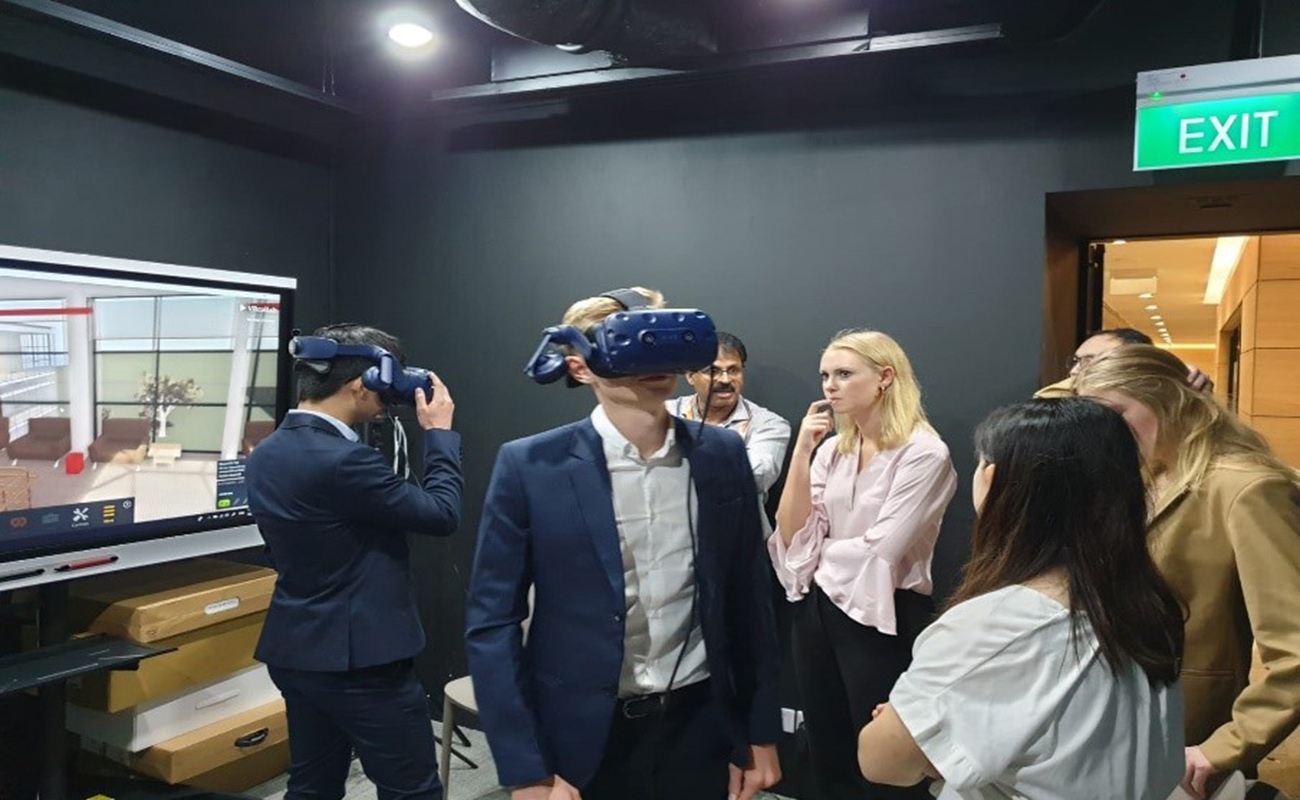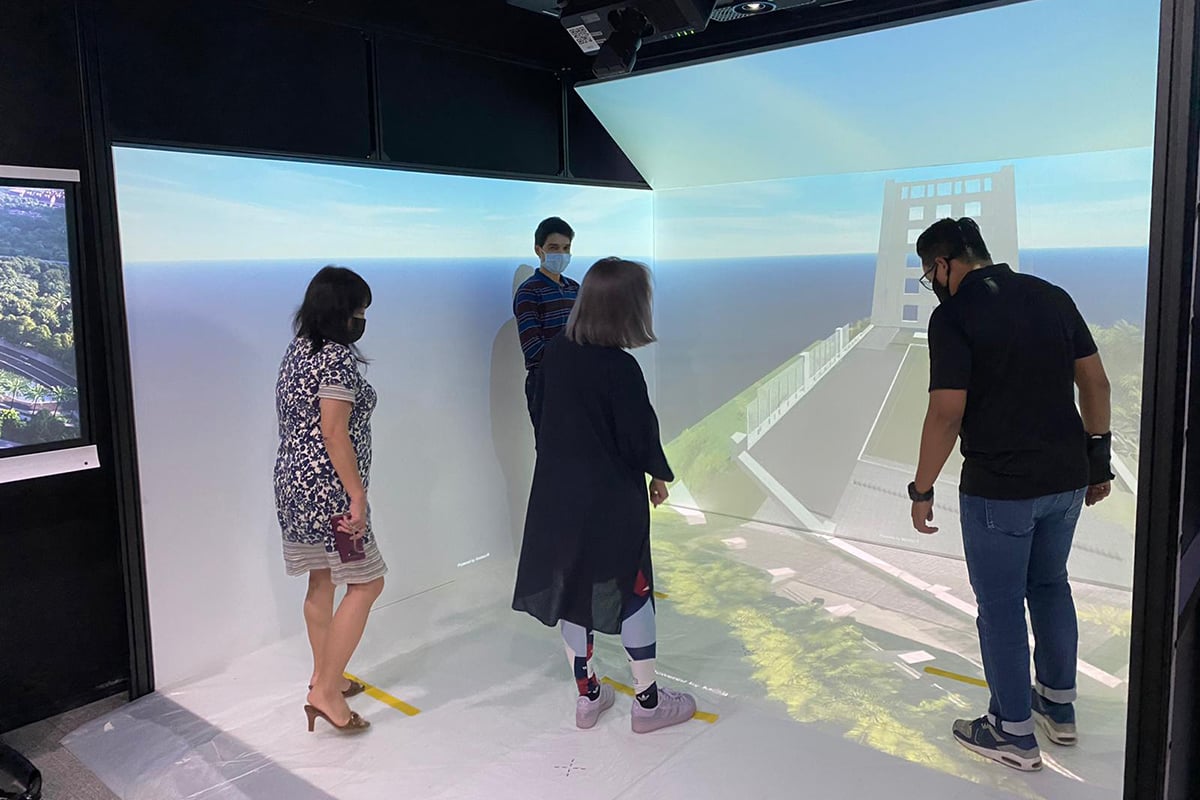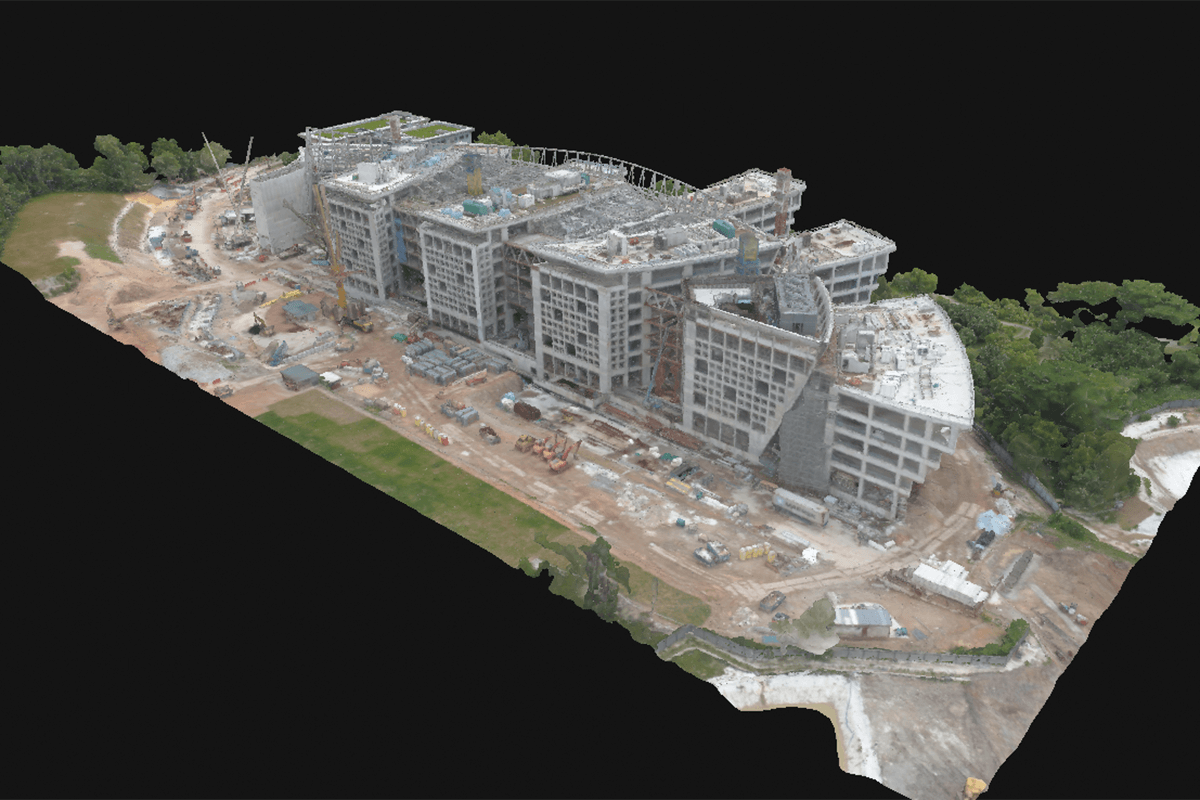Turning Dreams into Reality with Research and Innovation
 By SJ Global Academy and Surbana Jurong’s Smart Cities Solutions
By SJ Global Academy and Surbana Jurong’s Smart Cities Solutions
A sprawling complex wrapped in lush foliage lies near Nanyang Technological University. Inside, green technologies such as self-shading for heat reduction and smart lighting are installed to attain a net-zero impact.
When it officially opens in early 2023, the Surbana Jurong (SJ) Campus aims to be a leading light in intelligent building design. It is the culmination of SJ’s research and innovation (R&I) efforts over the last decade.
This vision of a smart, sustainable and future-ready workplace was presented at the BuildSG LEAD Forum on 22 November 2021, jointly organised by the Building and Construction Authority (BCA) and JTC Corporation. It was attended by more than 500 participants, featured speakers and panelists from the BCA, CapitaLand, JTC, Teambuild, Shimizu Corporation and SJ – who shared their latest technologies and views on R&I in the built environment sector.
Panelists provided insights on how to implement R&I effectively in the Built Environment sector, touching on topics ranging from the value of management support to cultivating a culture of innovation. For SJ, R&I success comes from collaboration, both internal and external.
In 2017, SJ had a vision of pooling our talents and using R&I to bring ideas to life. R&I is said to be for thinkers, but for my team, our job is to make the dream a reality. As technology continues to evolve and empower smarter ways of building, SJ strives to combine the human element with R&I to ensure its developments are also people-centric.
Guiding Principles for R&I
This R&I philosophy guides the development of the new SJ Campus: keep pace with technology, be future-ready, and create pragmatic solutions that improve productivity. This building will be fully utilized as a full-fledged office, a place to work and play. When completed, the campus will become a catalyst for the growing Jurong Innovation District.
So, SJ turned to the Integrated Design Delivery (IDD) Framework. A key thrust in the Construction Industry Transformation Map (ITM), IDD uses digital technologies to integrate work processes and connect stakeholders from start to finish. The ITM is a national roadmap to identify growth opportunities in construction.
SJ maps out how digital, technology and sustainability could work together. Looking at smart cities with a sustainability lens, we study areas like wellness, environment, construction, and how we can produce zero waste, and stitch them under one R&I goal and underpinned by technology.
Facing R&I Challenges
Such an undertaking presents multiple challenges, and staying in the black tops the list. SJ is a business first and foremost, and we cannot conjure money to do R&I just like that. So, we need to be pragmatic.
Any plans to introduce new technology should ideally see SJ gain a competitive edge. As such, it screens for viable tools that can be used in projects. Promising ones will either undergo proof-of-concept testing or be deployed in a limited capacity, like using GoPros and drones to survey the Campus’ construction.
 A multi-user coordination virtual review of a BIM model is carried out using a Smart Board (SB) and Virtual Reality (VR) environment that uses a Head Mounted Device (HMD). Credit: Surbana Jurong
A multi-user coordination virtual review of a BIM model is carried out using a Smart Board (SB) and Virtual Reality (VR) environment that uses a Head Mounted Device (HMD). Credit: Surbana Jurong
While we want to show evidence that it works before rolling it out, we do not want to go out with guns blazing and see multiple failures. To tackle another challenge – resistance to embracing new technology – we believe in coaching and showing that it truly works to win people over. This means generating excitement around R&I projects. and helping employees acquire the relevant expertise to accomplish their business and personal goals.
Crucial to this process is helping colleagues to adapt. One employee in her 50s learnt how to use advanced building information modelling software in six months, helping her do work more effectively and efficiently. She now performs measurements and documentations of her work directly on her two screens as testimony of not only going digital, but also setting an example that employees of all ages can embrace technology as long as they are willing and interested. She now promotes upskilling among her colleagues to create a culture of continuous learning in SJ. After undertaking and completing the Advance Certificate in Learning and Performance (ACLP) from the Institute of Adult Learning, she also coaches her peers to help them attain the certification themselves.
The Power of Collaboration
Such enthusiasm for reskilling gives SJ the right balance – R&I success delivered by confident people. I would like to credit my colleagues for mastering cutting-edge technologies to break new ground with their “can-do attitude”. Say what you want about technology but without people, they won’t work effectively. SJ also collaborates with like-minded industry players to grow its capabilities. This requires working together to understand one another.
We need to have that process of discovering and understanding, rationalising and knowing how one value adds to another, because if we don’t and we go into a joint venture, it is almost a guarantee that it will end up in complications and disagreement. Trust and respect are important, and one partnership that blossomed was with virtual reality (VR) company, VRcollab – following a Memorandum of Understanding signed in 2019. The joint project involved implementing a virtual reality environment for virtual design and construction, otherwise known as Computer Aided Virtual Environment (CAVE).
 An immersive BIM model walkthrough, featuring interior and exterior designs, in the Computer Aided Virtual Environment (CAVE) for the SJ Campus project. Credit: Surbana Jurong
An immersive BIM model walkthrough, featuring interior and exterior designs, in the Computer Aided Virtual Environment (CAVE) for the SJ Campus project. Credit: Surbana Jurong
CAVE is an immersive platform where projections of building models help users visualise designs relative to their real-world surroundings. Installed at the Collaboration Hub at Connection One by the company Aviation Virtual, this was especially useful in the Campus project as designers could enter a 3D space and study the design from all angles immersively and resolved clashes in design. The partnership with Aviation Virtual is still strong till today as they plan a bigger CAVE at the SJ Campus.
A Campus That Drives Innovation
The SJ Campus is set to be the built environment’s hub of the future, enabling the organisation to lead the way in using the latest technology enabled by R&I.
 Visualisation and inspection of SJ Campus site progress are done using drone photogrammetry. Credit: Surbana Jurong
Visualisation and inspection of SJ Campus site progress are done using drone photogrammetry. Credit: Surbana Jurong
This is in sync with SJ’s tag line, “Building Cities, Shaping Lives”, which motivates its people to tap the latest innovations to revolutionise construction. There are also plans to expose more youths from the Institutes of Higher Learning and the Institute of Technical Education to the industry via research partnerships and attachments.
Moving forward, SJ will look at how we can move into digital energy, and how we can transform SJ into a data-driven organisation. We want the best minds in Singapore working on this together, and to create an environment that nurtures them.
This article was first published on BuildSG (https://www1.bca.gov.sg/buildsg-emag) – an e-magazine under the Building and Construction Authority, and is re-purposed for Perspectives on SJ website.


